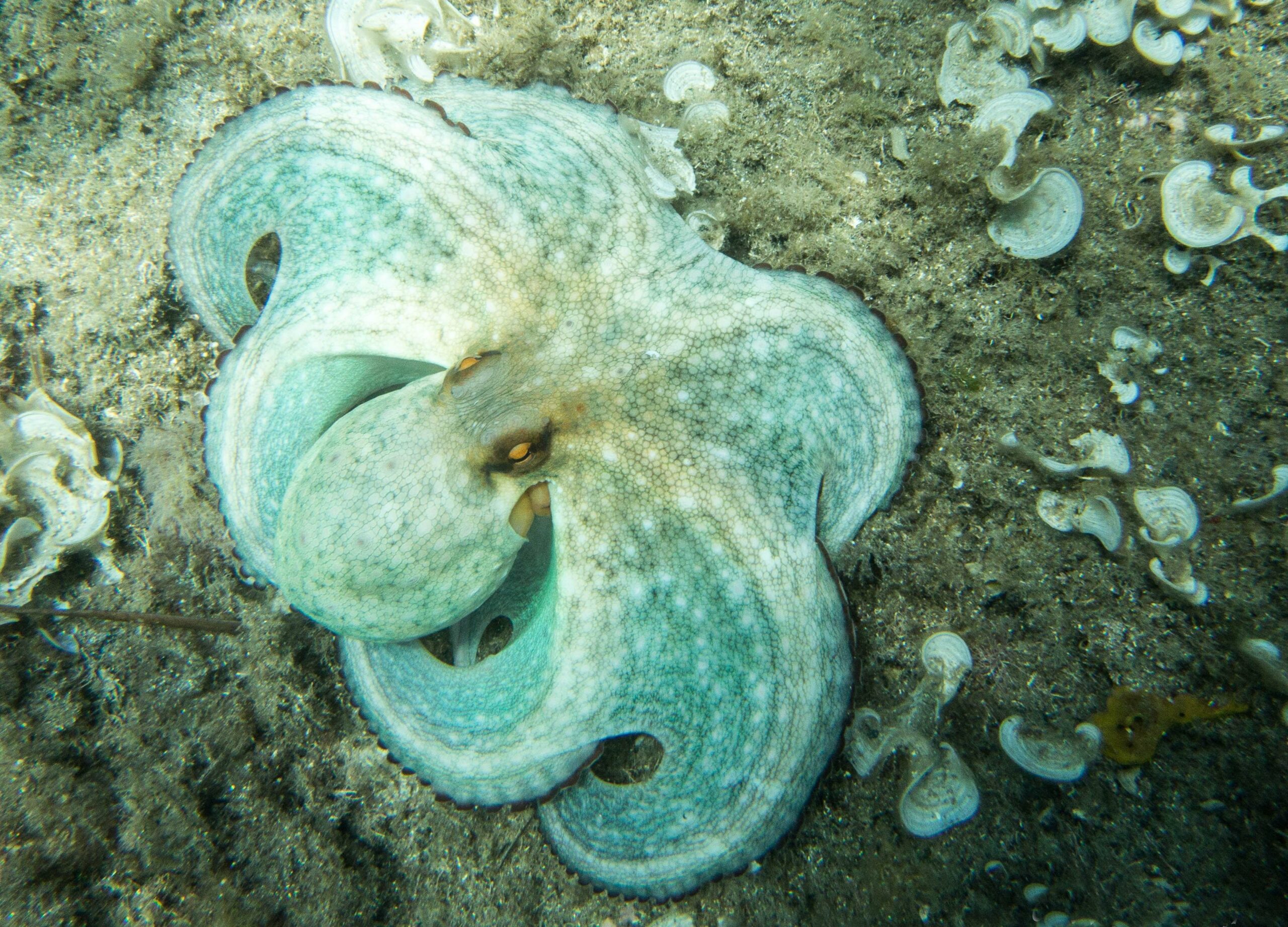Are you ready to dive into the remarkable world of the glass octopus? Prepare to be captivated by a mesmerizing creature whose secrets have long eluded us. In this article, we will unveil a treasure trove of fun facts about the enigmatic glass octopus. From its transparent appearance that defies belief to its mind-boggling navigational abilities, these cephalopod wonders will leave you awe-inspired. So, buckle up and get ready for an exhilarating journey into the depths as we reveal the fascinating secrets of the glass octopus!

Fun Facts about Glass Octopus
The mesmerizing glass octopus is a creature of intrigue, shrouded in mystery and rarely encountered. Let’s dive into some captivating fun facts about the glass octopus to uncover the enigmatic secrets that lie beneath the ocean’s surface.
A Translucent Wonder
Imagine encountering a creature so transparent it appears as if it’s vanishing into thin air. That’s precisely what you’ll find with the glass octopus. This remarkable cephalopod is nearly entirely transparent, with only its eyes, optic nerve, and digestive tract revealing an opaqueness that captivates researchers and ocean enthusiasts alike.
“The glass octopus boasts a jaw-dropping level of transparency, making it a true master of disguise in the depths of the ocean.”
A Hidden World in the Deep
The glass octopus prefers to call the mesopelagic and bathypelagic zones its home, residing in deep waters where sunlight fails to reach. At depths of around 3,000 feet, this elusive creature navigates through an environment shrouded in darkness, teeming with fascinating marine life.
“Venturing into the depths, the glass octopus embraces the dark abyss where sunlight rarely penetrates, demonstrating its remarkable adaptability to extreme conditions.”
An Elusive Diet
When it comes to sustenance, the glass octopus has a refined palate. Its diet primarily consists of crustaceans such as mollusks and snails. With its developed hunting skills, this cephalopod stealthily seeks out its prey and devours it with precision and grace.
“The glass octopus is a skilled hunter, delicately feasting on a menu comprised of crustaceans, adding to its allure as an extraordinary ocean dweller.”
Clever Camouflage
Evolution has imparted the glass octopus with an ingenious defense mechanism: its eyes. These extraordinary orbs have evolved into an elongated shape, rendering them less visible from above, where potential predators might lurk. This adaptation allows the glass octopus to stay hidden and remain undetected in the vast expanse of the ocean.
“With its elongated eyes, the glass octopus manages to outwit its foes by blending seamlessly into the depths, leaving its predators puzzled and mesmerized.”
A Remarkable Survivor
To thrive in the harsh and inhospitable conditions of the deep sea, an extraordinary level of adaptability is required. The glass octopus is among the rare few species that have managed to do just that. Its ability to adapt to extreme pressures, low temperatures, and scarce food sources showcases its resilience and tenacity.
“As a survivor of the abyss, the glass octopus stands as a testament to the astonishing capacity of nature to adapt and thrive.”
The Transparent Marvel
The glass octopus, with its streamlined elegance, can grow to a remarkable length of about 1.5 feet. While its lifespan is relatively short, ranging from 2 to 5 years, it makes the most of its time in the depths, leaving a lasting impression on those fortunate enough to catch a glimpse of this elusive creature.
“The glass octopus, a true marvel of the depths, graces our oceans with its presence, captivating observers with its transparency and remarkable beauty.”
A Master of the Abyss
The glass octopus is perfectly suited for its deep-water habitat within the aphotic zone, devoid of sunlight. Its near-transparency lends it unparalleled camouflage, allowing it to blend seamlessly into its surroundings. This mastery of stealth and adaptation ensures the glass octopus remains hidden from prying eyes.
“In the depths of the ocean’s abyss, the glass octopus reigns as a true master, embodying the art of concealment and bewitching all who encounter it.”
Glass is truly a fascinating material! Did you know that it has been around for thousands of years? If you’re curious about some fun facts about glass and its rich history, click here to uncover secrets about this versatile material: fun facts about glass. You’ll be amazed by what you discover!
Fun facts about glass octopus are truly fascinating. Did you know that glass octopuses have the amazing ability to camouflage themselves perfectly in their surroundings? These mysterious creatures are masters of disguise, blending seamlessly with the oceanic environment around them. If you want to learn more about glass octopus facts, click here: glass octopus facts.
In addition to their camouflage skills, there are some truly intriguing facts about glass octopuses. For instance, did you know that they are nearly transparent, giving them the appearance of delicate glass sculptures? Their ethereal presence and intricate beauty make them a subject of admiration for many marine enthusiasts. If you’re interested in discovering more intriguing facts about glass octopuses, check out this link: intriguing facts about glass octopus.
But it doesn’t stop there; glass octopuses possess some truly amazing properties that set them apart from other marine creatures. These unique creatures have the ability to change the shape of their bodies and even alter their size! Imagine being able to transform and adapt your appearance at will. If you’re curious about the amazing properties of glass octopuses, feel free to visit: amazing properties of glass octopus.
Learning about glass octopuses and their captivating characteristics is a thrilling journey into the depths of the ocean. Don’t miss out on the opportunity to delve into the world of these mesmerizing creatures. Click on the provided links and prepare to be amazed by the wonders of the glass octopus!
The Fascinating World of the Glass Octopus: A Closer Look at a Transparent Deep-Sea Wonder
[youtube v=”s66Pp4bIhE0″]
The glass octopus, a captivating creature of the deep sea, remains a rare sight for many. Residing in the tropical and subtropical regions of the world’s oceans, this cephalopod has intrigued scientists since its discovery in 1918. With its unique features and mysterious lifestyle, the glass octopus continues to captivate the minds of marine enthusiasts.
A Dazzling Display of Transparency
This mesmerizing creature’s defining characteristic is its near-transparent body. With only its eyes, optic nerve, and digestive tract revealing a slight opaqueness, the glass octopus can easily blend into its surroundings, evading predators. By minimizing shadows and maintaining a vertical orientation of its spindle-shaped digestive gland, this cunning cephalopod manages to remain inconspicuous during its graceful swim.
Mastering the Art of Adaptation
The glass octopus has truly mastered the art of surviving in extreme conditions. Primarily residing in the mesopelagic and bathypelagic zones, at depths of around 3,000 feet, this deep-sea dweller has adapted to cope with the intense pressure, low temperatures, and scarce food sources that come with such depths. As a testament to its resilience, it continues to thrive in its deep-water habitat within the aphotic zone, where sunlight cannot penetrate and prying eyes are unable to uncover its secrets.
A Delicate Diet and Unique Mating Habits
While information about the glass octopus’s ecology remains limited, researchers have discovered that its diet primarily consists of crustaceans, such as mollusks and snails. This delicately balanced diet ensures its survival in the depths of the ocean, where food can be scarce.
The glass octopus’s mating habits are equally intriguing. Video evidence suggests that the male envelops the female within his webs during the mating process. Females, on the other hand, are believed to brood their hundreds of eggs in their mantle cavity until hatching. These unique reproductive strategies shed light on the intricate dynamics of this secretive deep-sea cephalopod.
An Enigma of the Deep
As we delve deeper into the world of the glass octopus, we are reminded of its elusive nature. With much of its life shrouded in mystery, our understanding of this remarkable creature continues to evolve. Its elongated eyes, ability to adapt to extreme conditions, and perfect camouflage within the aphotic zone showcase its remarkable survival skills.
The glass octopus, a true enigma of the deep, serves as a testament to the wonders of the natural world. As we strive to uncover more about this captivating creature, we gain a deeper appreciation for the intricate and diverse ecosystems that flourish beneath the ocean’s surface.
“The glass octopus, with its transparent body and mesmerizing adaptations, remains a captivating enigma of the deep sea.”
FAQ
Q: How rare are sightings of the glass octopus?
A: Sightings of the glass octopus are incredibly rare.
Q: What parts of the glass octopus are transparent?
A: The glass octopus is nearly entirely transparent. Only its eyes, optic nerve, and digestive tract are opaque.
Q: Where does the glass octopus live?
A: The glass octopus lives in the mesopelagic and bathypelagic zones, in deep waters where sunlight doesn’t reach, at around 3,000 feet.
Q: What does the glass octopus eat?
A: The glass octopus’s diet consists primarily of crustaceans, such as mollusks and snails.
Q: How has the glass octopus evolved to adapt to its environment?
A: The eyes of the glass octopus have evolved into an elongated shape to make them less visible from above. It is also one of the very few species that has evolved to adapt to harsh conditions.
- Unveiling Bernhard Caesar Einstein’s Scientific Achievements: A Legacy in Engineering - July 15, 2025
- Uncover who is Jerry McSorley: CEO, Family Man, Business Success Story - July 15, 2025
- Discover Bernhard Caesar Einstein’s Scientific Contributions: Unveiling a Legacy Beyond Einstein - July 15, 2025















